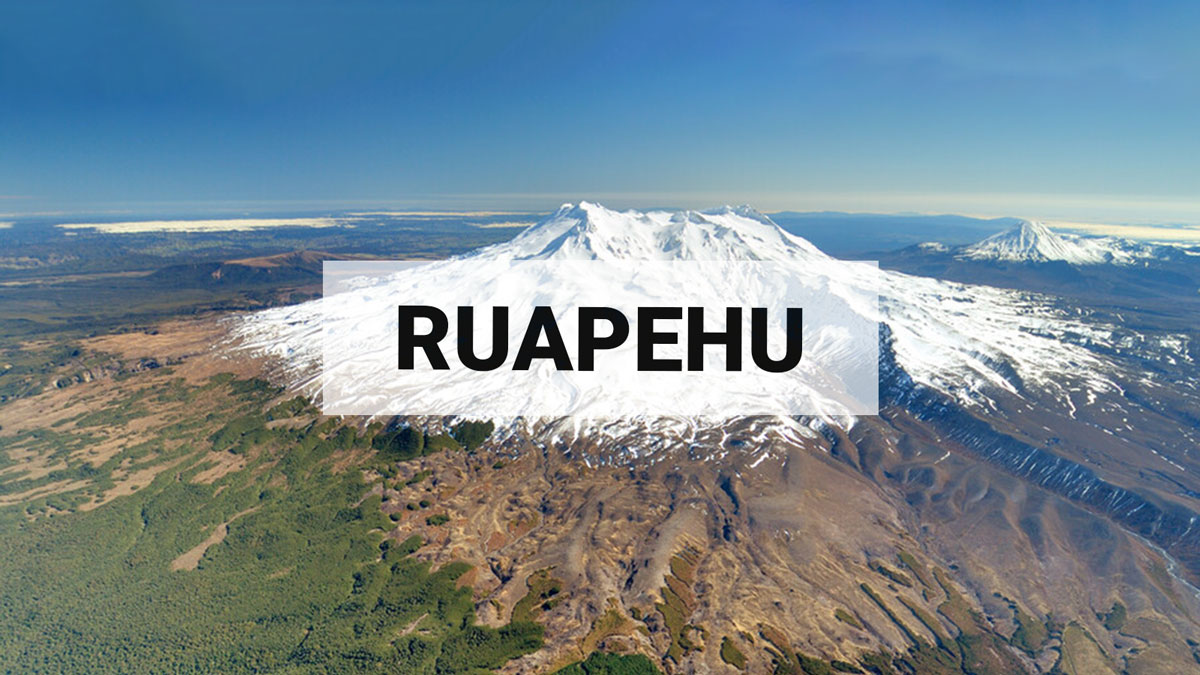
Minor volcanic unrest continues at Mt Ruapehu. Volcanic Alert Level remains at 1.
The unusual volcanic earthquakes under Mt Ruapehu have considerably reduced in number. The Crater Lake continues to show a slow decline in lake temperature, and water level indicates minor overflows. The volcanic gas monitoring continues to measure low-moderate volcanic gas emissions. The Volcanic Alert Level remains at 1 and the Aviation Colour Code at Green.
Based on the characteristics of these unusual volcanic earthquakes, we have identified them as a type of activity called “spasmodic bursts”. The occurrence of these uncommon style of small volcanic earthquakes beneath Ruapehu has significantly reduced, with just five observed since 10 May.
Each of these bursts usually consist of up to about five minutes of ground shaking. These events remain small, and therefore difficult to locate. Their short duration means that the earthquakes are not categorised as volcanic tremor, which remains low at Ruapehu.
Te Wai ā-moe (Crater Lake) temperature continues to slowly decline. Currently the lake temperature is 16-17 ºC, down from a peak of 31 ºC on 14 February. The lake water level is fluctuating around overflow, likely reflecting less melt water as air temperatures fall and some rain and/or snow input during storms. The cooling of the Crater Lake, together with declining gas flux, is consistent with cooling of the hydrothermal system beneath the lake.
All of the recent observations are consistent with ongoing volcanic and hydrothermal processes and the overall low level of volcanic activity at Mt Ruapehu. A sudden eruption at Mt Ruapehu remains very unlikely. Monitoring indicators remain consistent with a low level of volcanic activity. As a result, the Volcanic Alert Level remains at 1. The Aviation Colour Code remains Green.
More information:
Mt Ruapehu is an active volcano and has the potential to erupt with little or no warning when in a state of minor volcanic unrest.
The Volcanic Alert Level reflects the current level of volcanic unrest. The Volcanic Alert Level should not be used to forecast future activity.
Volcanic Alert Level 1 indicates the primary hazards are those expected during volcanic unrest: steam discharge, volcanic gas, earthquakes, landslides, and hydrothermal activity. While Volcanic Alert Level 1 is mostly associated with environmental hazards, potential for eruption hazards also exists and eruptions can still occur with little or no warning. Volcanic Alert Levels 3, 4 and 5 are reserved for eruptions with varying impact distances.
For information on access to the Mt Ruapehu area, please visit the Department of Conservation’s website on volcanic risk in Tongariro National Park and follow the DOC Tongariro Facebook page for further updates.
For information about responding to volcanic activity there are guidelines from the National Emergency Management Agency.
GNS Science and its National Geohazards Monitoring Centre continue to closely monitor Mt Ruapehu for further changes.
Paul Jarvis
Duty Volcanologist
Media Contact: 021 574 541 or media@gns.cri.nz
